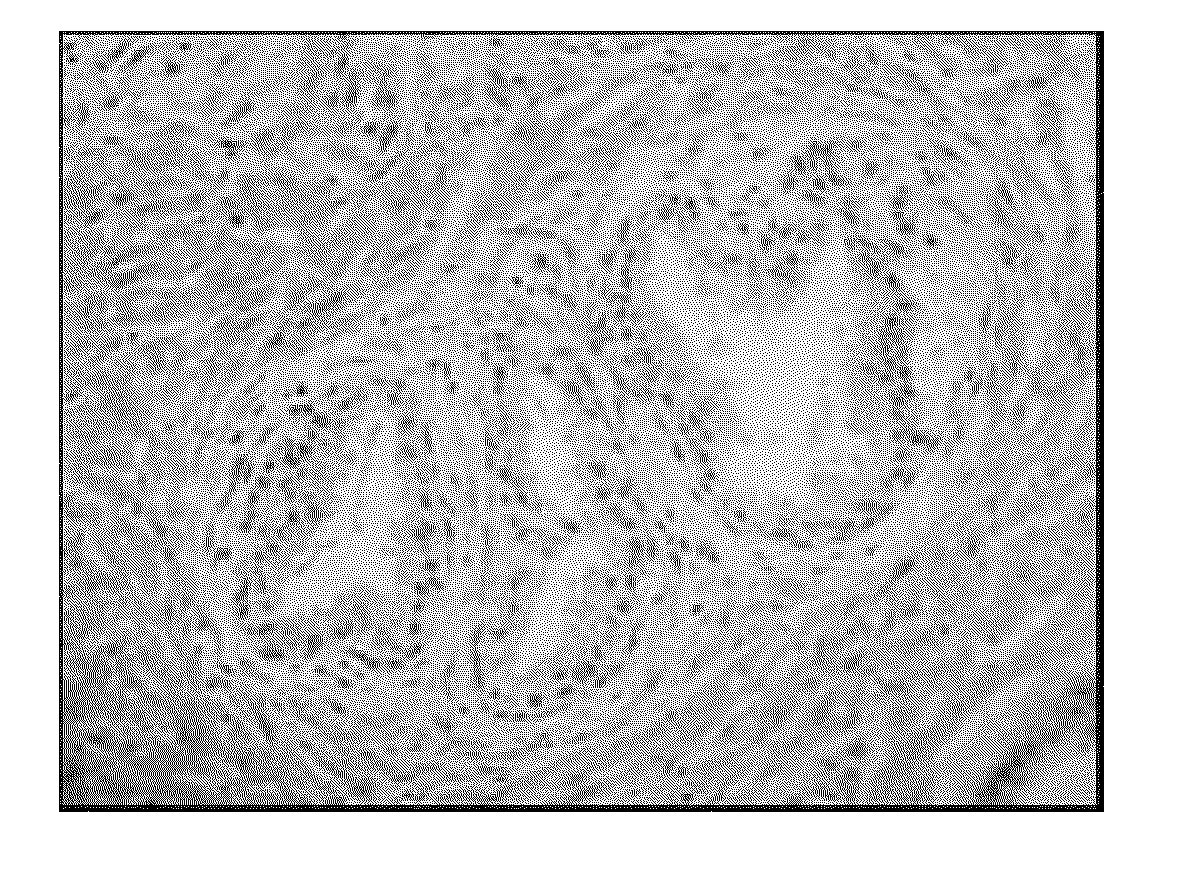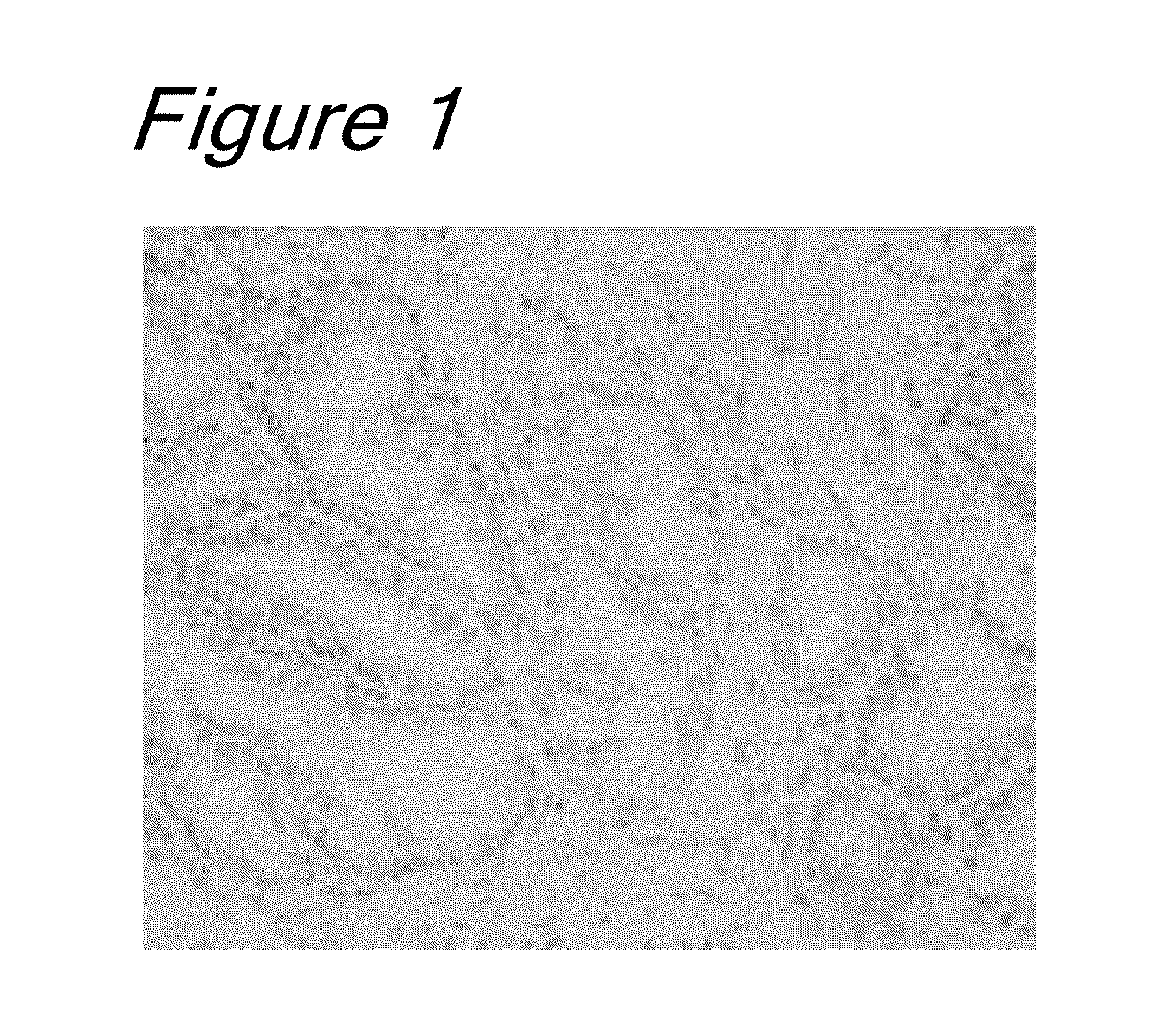Novel method for specimen preparation, which ensures preservation of tissue morphology and nucleic acid quality
- Summary
- Abstract
- Description
- Claims
- Application Information
AI Technical Summary
Benefits of technology
Problems solved by technology
Method used
Image
Examples
example 1
Preparation of Specimens
(1) Preparation of Specimens by PLP-Amex-Paraffin Method or PFA-AMeX-Paraffin Method and Observation of Tissue Morphology
[0045]The tissues used were obtained from patients with prostate cancer or benign prostatic hyperplasia who consented to use of their excised tissues for research purposes. The obtained samples were each trimmed to about 5 mm3 size and fixed in PLP fixative (0.01 M periodate, 0.075 M lysine, 0.0375 M phosphate buffer, 4% paraformaldehyde) or in 4% PFA fixative (4% paraformaldehyde / 0.01 M PBS (pH 7.4)) at 4° C. for 16 to 24 hours. The fixed samples were washed with a 0.01 M PBS solution (at 4° C. for 2 hours) and then dehydrated with acetone (at 4° C. overnight and at room temperature for 30 minutes×4), followed by treatment with methyl benzoate (at room temperature for 30 minutes×2) and clearing with xylene (at room temperature for 30 minutes×2). Then, the samples were immersed in a paraffin solution at 60° C. (for 40 minutes×3), embedded i...
example 2
Observation of Tissue Morphology
[0050]For preparation and staining of thin sections from the paraffin blocks prepared by the PFA-AMeX-paraffin method, commercially available standard instruments and reagents were used. More specifically, paraffin sections of 4 μm thickness were prepared in a standard manner from the paraffin blocks, and each section was mounted on a foiled frame for an AS-LMD system (Leica Microsystems) and then dried. After deparaffinization with xylene (at room temperature for 15 seconds×2) and rehydration with acetone (at room temperature for 15 seconds×2), the sections were washed with RNase-free water and immersed in Mayer's hematoxylin solution (at room temperature for 10 seconds). After washing again with RNase-free water, the sections were immersed in an eosin solution (at room temperature for 10 seconds) and then dehydrated with ethanol (100% ethanol, at room temperature for 10 seconds). The sections stained with hematoxylin-eosin (HE) were dried and then o...
example 3
Extraction and Quantification of Total RNA from Specimens Prepared by Four Types of Specimen Preparation Methods, as Well as Comparison of mRNA Quality
[0053]Starting from the same tumor tissue of cultured human prostate cancer cells (LNCaP cells) transplanted into NOG mice, specimens were prepared according to the above four specimen preparation methods (fresh-frozen method, PFA-AMeX-Paraffin method, PFA-Paraffin method, NBF-Paraffin method). Total RNAs were extracted from thin sections of these specimens, followed by comparison of mRNA quality.
(1) Extraction of Total RNA from Thin Sections
[0054]Thin paraffin sections of the specimens prepared by the PFA-AMex-Paraffin method, the PFA-Paraffin method and the NBF-Paraffin method were respectively transferred to separate tubes (0.2 mL). After deparaffinization (xylene, at room temperature for 15 seconds×3) and rehydration (100% ethanol, at room temperature for 15 seconds), the thin sections were dried. Then, 205 μL lysis buffer (20 mM ...
PUM
| Property | Measurement | Unit |
|---|---|---|
| Gene expression profile | aaaaa | aaaaa |
| Morphology | aaaaa | aaaaa |
Abstract
Description
Claims
Application Information
 Login to View More
Login to View More - R&D
- Intellectual Property
- Life Sciences
- Materials
- Tech Scout
- Unparalleled Data Quality
- Higher Quality Content
- 60% Fewer Hallucinations
Browse by: Latest US Patents, China's latest patents, Technical Efficacy Thesaurus, Application Domain, Technology Topic, Popular Technical Reports.
© 2025 PatSnap. All rights reserved.Legal|Privacy policy|Modern Slavery Act Transparency Statement|Sitemap|About US| Contact US: help@patsnap.com



